Research and scholarly material on flame and combustion.
TO
Filters: Collection: "uu_afrc" Date: "2004"
1 - 25 of 12
| Creator | Title | Date | Description | ||
|---|---|---|---|---|---|
| 1 |
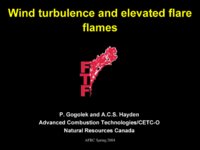 |
Gogolek, Peter E.G.; Hayden, A.C.S. | Wind turbulence and elevated flare flames | 2004 | |
| 2 |
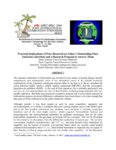 |
Seebold, James G.; Gogolek, Peter E.G.; Pohl, John; Schwartz, Robert | Practical implications of prior research on today's outstanding flare emissions questions and a research program to answer them | 2004 | The external combustion of hydrocarbon gas mixtures by any means, including flaring, literally manufactures and subsequently emits to the atmosphere traces of all possible molecular combinations of the elemental constituents present either in the fuel or in the air including the ozone precursor high... |
| 3 |
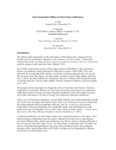 |
Pohl, John; Gogolek, Peter E.G.; Seebold, James G.; Schwartz, Robert | Fuel composition effect on flare flame inefficiency | 2004 | The effects of fuel composition on the performance of flare flames have long been known. Possibly the first performance indicator was the tendency of a fuel to smoke. Various fuel characteristics such as average molecular weight and carbon-to-hydrogen ratio were advanced to guide the design of early... |
| 4 |
 |
Pagot, P. R.; Grandmaison, E. W.; Sobiesiak, A. | Some characteristics of multi-jet flares | 2004 | Results of a test program with a multi-jet, high momentum burner simulating many of the features found in offshore flare systems are described. Previous work (Pagot et al., 2003) has given background on a hot and cold model study for this type of flare. The features of the flare flames are described... |
| 5 |
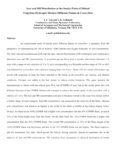 |
Goh, S. F.; Gollahalli, S. R. | Soot and OH distribution at the smoke point of diluted propylene-hydrogen mixture diffusion flames in cross-flow | 2004 | An experimental study of smoke point diffusion flames in cross-flow is presented from the perspective of understanding the role of hydroxyl (OH) radicals and oxygen molecules on soot concentration. The laser induced incandescence (LII) and the laser induced fluorescence (LIF) techniques were employe... |
| 6 |
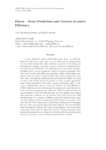 |
Hantsck, Carl-Christian; Schorer, Edwin | Flares - noise prediction and thermo-acoustic efficiency | 2004 | In many industries where combustible waste gases are obtained, flares are used to burn these gases in a controlled manner. Among other environmental aspects the noise emissions associated with flaring are becoming increasingly important in many countries as population density goes up and residential... |
| 7 |
 |
Desam, Padmabhushana R.; Smith, Philip J.; Borodai, Stainslav G.; Kumar, Seshadri | Computing flare dynamics using large eddy simulations | 2004 | Computing the dynamics of flares is motivated by the increased need for efficient and safe flaring of unwanted gases during hydrocarbon and petrochemical processing. To understand the unsteady flame shape dynamics, Large Eddy Simulations (LES) are used to study natural gas flares in the presence of ... |
| 8 |
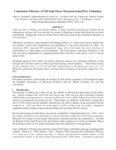 |
Chambers, Allan K.; Wootton, Tony; Moncrieff, Jan; McCready, Philip | Combustion efficiency of full scale flares measured using DIAL technology | 2004 | Flares are used in Alberta's oil and gas industry to safely treat H2S containing gas releases during emergencies, and gas well flow tests and as a means of disposing of gases that cannot be recovered economically. Despite the wide use of these flares, little data exists on the combustion efficiency ... |
| 9 |
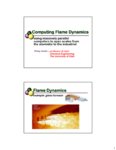 |
Smith, Philip J. | Computing flame dynamics using massively parallel computers to span scales from the atomistic to the industrial | 2004 | |
| 10 |
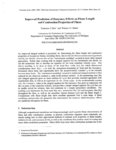 |
Diez, Francisco J.; Dahm, Werner J.A. | Improved prediction of buoyancy effects on flame length and combustion properties of flares | 2004 | An improved integral method is presented for determining the flame length and combustion properties of buoyant jet flames, including flares, that avoids the Morton entrainment hypothesis entirely and thereby removes the ad hoc "entrainment modeling" required in most other integral approaches. Rather... |
| 11 |
 |
Seebold, J.G. | Practical implications of prior research on today's questions about flare emissions | 2004 | |
| 12 |
 |
Flare liquid seal drum surging: prediction, prevention and proof | 2004 |
1 - 25 of 12
